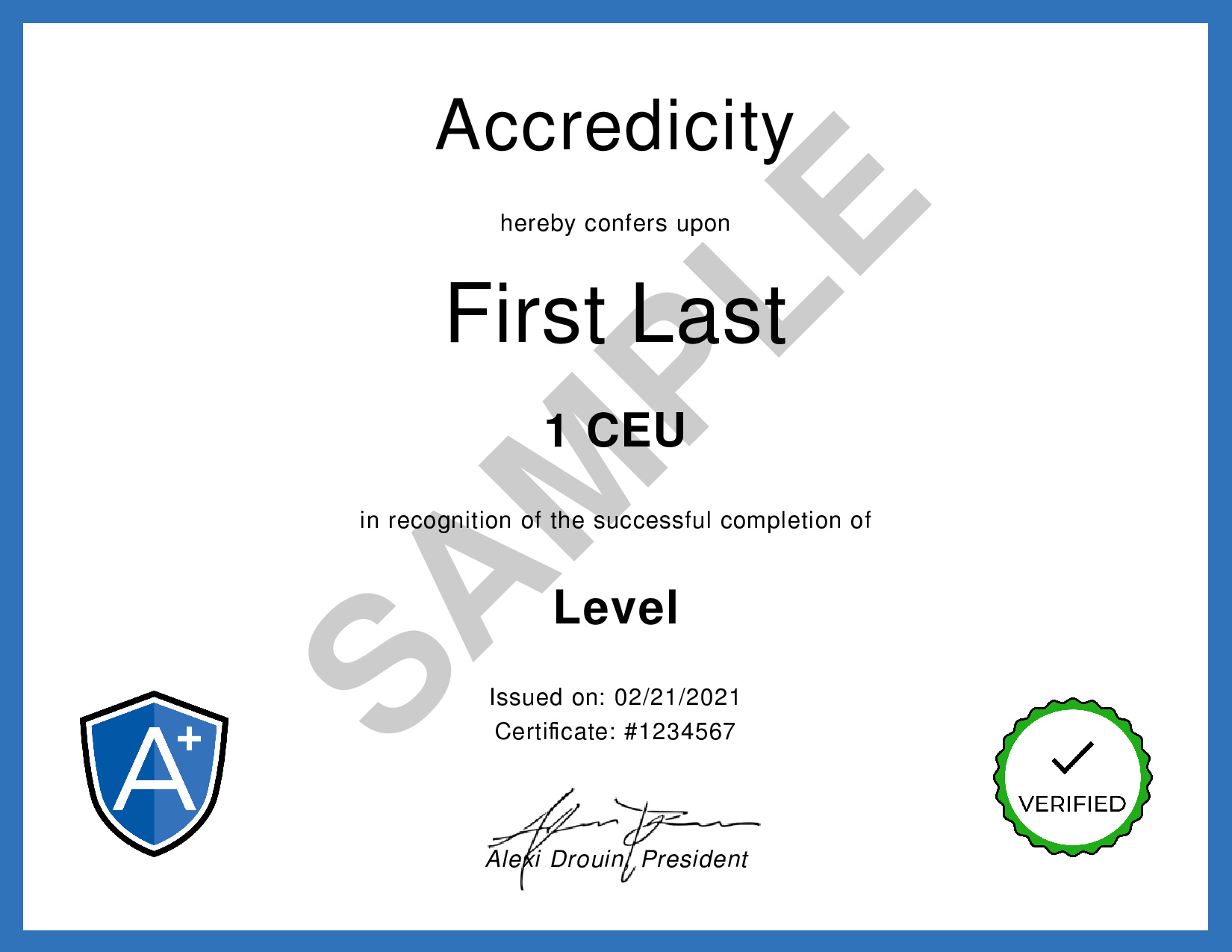Telling Stories With Data In 3 Steps (Quick Study) | HBR
Reference: Harvard Business Review. (2019, October 30). Telling Stories with Data in 3 Steps (Quick Study) [Video]. YouTube.
We Make Your Education Count

Get the Credit You Deserve and Become the Most Attractive Job Candidate by Earning and Posting A+ Badges to Your Linkedin Profile.
Sign Up to Get Started at Accredicity
|
Discover how to tell powerful stories with data in 3 simple steps - watch the video now! Scott Berinato reveals the three elements of storytelling that can be applied to data in his video for Harvard Business Review, Telling Stories with Data. In the video, he explains that stories have a setup, conflict, and resolution and this structure can be used to build stories with data. He explains that reality is the setup and conflict is the change to that reality which creates a resolution. He then takes a chart and explains how to use the three elements to create a story. The example is of the Global Real Home Price Index and how it showed prices rose steadily in most places in the world, except Japan, which experienced a 30 year bubble. He then rearranges the chart to show the setup, conflict, and resolution state, creating an emotional connection with the audience. Learning Outline1. Setup: Introduce the reality or situation for the story by focusing on the Global Real Home Price Index, which is indexed to 2005. Instructional ContentTelling stories with data is a powerful tool that can be used to create an emotional connection with an audience. Scott Berinato, in his video “Telling Stories with Data in 3 Steps (Quick Study)”, outlines a simple three-step process for taking a data chart and transforming it into an engaging narrative. His process begins with recognizing the three elements of a story: setup, conflict, and resolution. Once these elements are identified, the story can be broken down into its component parts and reassembled as a storytelling device. Berinato illustrates this process using the Global Real Home Price Index, which tracks the price of homes around the world from 2005 to the present. Berinato first identifies a setup—that home prices rose steadily in most places for 30 years except for in Japan, which experienced a three-decade long bubble. This is the conflict. The resolution is that when the index begins at 2005, a smaller housing bubble is observed in most places except Japan. Berinato then reconstructs the chart into separate states, highlighting the elements of the story in each one while leaving out any information that might distract from the story. By doing so, he creates an engaging narrative that helps the audience understand the data in an emotionally meaningful way. Telling stories with data can be a powerful tool for engaging an audience, but it requires an understanding of the elements of a story and how to construct an effective narrative. Berinato’s video “Telling Stories with Data in 3 Steps (Quick Study)” provides viewers with a straightforward, step-by-step guide to creating compelling data stories. Communication
|

Telling stories with data is like playing a game of catch with a ball. You start with a setup, which is a situation. Then, you add conflict, which is like Lucy taking the ball away at the last second. Resolution is then the new reality that the change creates. To tell stories with data, break down a chart, pull it apart, and look for the setup, conflict and resolution. Then, rebuild it as a storytelling device. It's really that simple! Video Quotes"Narrative is the most powerful, most human tool we have to communicate. If you can apply storytelling to your data, it creates an emotional connection with the audience. They're not only going to believe what you show them, they're going to feel it." - Scott Berinato "Setup. Charlie Brown runs toward the ball. Conflict. Lucy takes the ball away at the last second. Resolution? Ah!" - Scott Berinato "Without change, there is no story. You just have a bored audience." - Scott Berinato Related Quotes"In storytelling, you're trying to take a complex idea, simplify it, and make it easier to understand." - Cole Nussbaumer Knaflic, the video presenter. "It's really about finding the story that you want to tell and then finding the data that can support that story." - Cole Nussbaumer Knaflic, the video presenter. "Data is only as powerful as the story it can tell." - Cole Nussbaumer Knaflic, the video presenter. Competencies1. Effective Communication Learning Outcomes1. Understand the three elements of a story (Knowledge) Sample Answers1. From the video, I learned the importance of narrative when it comes to telling stories with data. Narrative is the best way to connect with your audience and make sure they understand the story you are trying to tell. By understanding the three elements of a story (setup, conflict, and resolution), you can effectively break down a chart to create a data story. 2. The video also taught me how to use titles to effectively highlight the story and draw the audience in. By using titles which reflect the story, you can ensure that your audience understands the message you are trying to communicate. 3. Lastly, I learned that it is important to remove any unnecessary information when telling stories with data. It is important to only focus on the elements of the story which are necessary to tell it effectively. This will help ensure that your audience stays focused and that the message is communicated clearly. Scott BerinatoScott Berinato is the Senior Editor at Harvard Business Review and has been with the organization since 2003. He is an expert on Telling Stories with Data because he has extensive experience in creating data visualizations and telling stories with data. He is a frequent speaker on the topic and has written extensively on the subject. He also co-authored a book on data storytelling. Scott Berinato is associated with Harvard Business Review, which is an international business magazine. Learning DesignThese three competencies are key components to effective communication. Effective communication is the ability to convey and receive messages in a clear and concise way. Analytical literacy is the ability to analyze information and draw conclusions. Information literacy is the ability to use information effectively and ethically. These competencies are important to learn for the course because they provide the tools needed to effectively communicate. With these tools, students are able to convey their messages in a clear and concise way, as well as analyze information and draw conclusions. Additionally, they will be able to use information ethically and responsibly. Overall, these three competencies are essential for effective communication. By using a blended learning approach, students are able to develop these competencies in a safe and supportive environment. AssessmentQ. What is the key element of storytelling with data according to Scott Berinato? A. A. Setup, conflict, and resolution QuestionsCommon Hypothetical Questions Real-Life Examples and Scenarios Keywordsdata storytelling, global real home price, "bubble lasting thirty years", "housing price bubble", "bifurcated market trends", "steady increase prices" Facts1. Data storytelling involves three elements: setup, conflict and resolution. Trends1. Create an interactive website or app that allows users to map out the trends in home prices and tell their own stories with data. 2. Develop a user friendly guide for creating data stories with a focus on storytelling elements like setup, conflict and resolution. 3. Create a game where participants must identify the storylines in charts, graphs and other data visualizations. 4. Create an infographic that shows the global trends in real home prices and how storytelling with data can help bring this information to life. SourceThis learning instructional guidance was formulated using the GPT-3 language model created by OpenAI. ShareData storytelling can help you create an emotional connection with your audience. Use these 3 steps: setup, conflict, resolution. #DataStorytelling #DataAnalysis #Communication #ConnectingwithAudience 😍 @Accredicity |








 15 Creds - Communication
15 Creds - Communication



